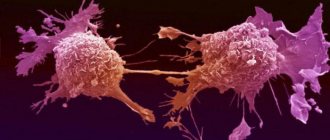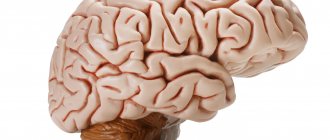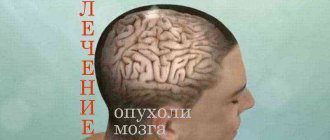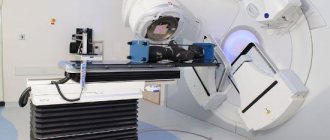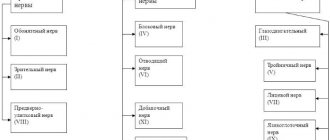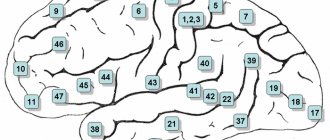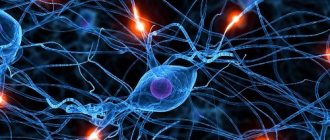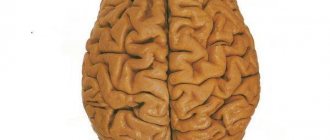Diencephalon: main functions and structure
Experts consider the functions of the medulla oblongata to be vital, given that even a minor disruption or failure in its functioning can lead to complex consequences.
Functions Implementation mechanism
| Sensory | Analysis of taste and auditory sensationsTransmission of sensitivity of facial nervesWork of vestibular stimuli | Processing and sending impulses received from external stimuli to the subcortex |
| Conductivity | Work of ascending and descending paths | Transporting impulses to important brain areas |
| Reflex | Vital | Sucking, chewing, swallowingStatic, statokinetic |
| Minor | Acceleration and deceleration of heart rate, Increased salivation |
The activity of the sensory functions of the medulla oblongata is aimed at receiving signals from sensory receptors that respond to changes in the external or internal environment.
Experts identify several main areas of internal reactions:
- Reception and analysis of sensory signals sent by the respiratory system. The medulla oblongata processes the information received and analyzes not only the state of the respiratory organs, but also the quality of metabolic processes. It is on the basis of analytical results that the brain center makes a decision to change the cyclicity, duration or reflex activity of the respiratory organs.
- Recognition and analysis of signals coming from taste and digestive receptors. In the medulla oblongata, a step-by-step analysis of the complex combination of the state of chewing, gustatory and digestive functions takes place, which is then analyzed by the main brain centers.
The medulla oblongata region of the brain is also capable of analyzing and transporting sensory signals coming from external stimuli:
- Changes in ambient temperature, overheating, hypothermia.
- Damage to the skin, irritation of pain receptors.
- Auditory, tactile and visual signals of varying intensity and frequency.
Receiving signals from external and internal stimuli is not the only role function of the medulla oblongata. This brain area, after processing the received information, performs transporting or conducting functions:
- Neurons of an important section of the elongated shape transmit the necessary information to the sections of the central nervous system along descending and ascending pathways.
- The medulla oblongata ensures the transportation of signals and impulses to parts of the brain, where they are analyzed and processed for the purpose of subsequent response.
The functions of the medulla oblongata directly depend on the structure and presence of reflex centers and their work.
The center responsible for digestion is capable of taking on important functions:
- regulation and regulation of salivation;
- sucking and chewing functions;
- production and transportation of gastric juice;
- swallowing.
The protective center, which performs a number of important functions for the body, is responsible for the following processes:
- lacrimation to moisturize and wash the organs of vision;
- cough spasm;
- sneezing reflex;
- blinking to protect the eye from drying out;
- gag reflex for timely cleansing of the digestive system from toxic sources.
The centers of the medulla oblongata, aimed at regulating the tone of skeletal muscles, are located in this important section and perform the following functions:
- control and regulation of human behavior;
- formation of stability in space;
- coordination of movements;
- facial functions.
The anatomy of the vegetative centers allows them to perform the following functions:
- the function of breathing regulation is aimed at supporting the normal activity of the respiratory muscles;
- Cardiovascular function ensures the functioning of the heart organ, normalization of arterial parameters, and optimization of the condition of arterial vessels.
The external and internal structure of the vital part of the brain called the medulla oblongata is characterized by complex completeness. Thanks to this, important transport and metabolic functions are ensured in this area and it communicates with other areas and parts of the brain and components of the central nervous system.
Source: https://nevrolog-info.ru/prodolgovatom-mozgu-nakhoditsya-nervnyy-tsentr-regulyatsii/
Reflexes of the medulla oblongata
The medulla oblongata is involved in the reflex regulation of basic autonomic functions. Destruction of the medulla oblongata leads to death, as respiratory movements stop, and then the activity of the heart. In the medulla oblongata, the pons contains the most important nerve centers.
Respiratory center
is excited automatically through the blood and reflexively, along afferent fibers that are part of the vagus and sympathetic nerves. If it is damaged, breathing movements immediately stop.
Nucleus of the vagus nerve
in adults it is in good shape and causes inhibition of the heart during reflex and neurohumoral stimulation. Therefore, when the medulla oblongata is destroyed, the regulation of the heart stops.
Main vasomotor center
.
Maintains the tone of blood vessels and regulates their lumen through reflex and neurohumoral pathways due to the influx of afferent impulses from the receptors of blood vessels and the entry of certain hormones, mediators and metabolites into the blood. Therefore, when the medulla oblongata is destroyed or separated from the spinal cord, blood pressure drops sharply.
Part of the food center
. Excited by neurohumoral and reflex pathways.
It includes: 1) the nuclei of the 7th and 9th cranial nerves, which cause salivation when the afferent fibers of the 5th and 9th nerves are excited; 2) the nucleus of the 10th nerve, which causes the separation of gastric and pancreatic juices when the afferent fibers of the same nerves are excited; 3) nuclei of the 7th and 12th nerves, causing sucking when the afferent fibers of the 5th nerve are excited; 4) the nuclei of the 5th, 7th and 12th nerves, which cause chewing when the afferent fibers of the 5th and 9th nerves are excited, and 5) the nuclei of the 7th. 9th, 10th and 12th nerves, causing swallowing when afferent fibers of the 5th, 9th, 10th nerves are excited.
Vomiting center
. Excited by reflex and neurohumoral pathways. Reflex excitation of this center is caused by irritation of the receptors of the root of the tongue, pharynx, stomach, intestines (mechanical and chemical irritation, strong pressure when the stomach is full, etc.
), in which excitation enters the medulla oblongata through afferent fibers of the 9th and 10th nerves, receptors of the uterus and other organs. Vomiting is also caused by stimulation of the vestibular apparatus, which is transmitted along the 8th nerve.
Through the blood, this center is excited by toxic substances that are produced by various microbes, as well as by some medicinal substances (apomorphine, etc.). Efferent impulses are carried along the spinal nerves, causing contraction of the diaphragm and abdominal muscles, and mainly through the vagus and sympathetic (splanchnic) nerves.
The act of vomiting is a complex coordinated act in which the cardiac sphincter opens, the diaphragm and abdominal muscles, muscles of the pharynx, tongue, mouth contract, antiperistalsis of the stomach and intestines occurs, etc. Vomiting begins when exhaling. Increased breathing inhibits vomiting.
Main sweating center . It is excited by reflex and neurohumoral pathways, for example, when body temperature rises when the body overheats. Through the centers of the spinal cord it causes sweating.
Lacrimal center
. Reflexively excited along the afferent fibers of the 5th nerve. Efferent fibers belong to the nucleus of the 7th nerve.
Center for Blinking and Closing Eyelids
. Reflexively excited by irritation of the cornea and conjunctiva. Afferent fibers pass through the 5th nerve, and efferent fibers pass through the 7th nerve.
Sneeze Center
. Reflexively excited when the receptors of the nasal mucosa are irritated. Afferent impulses are transmitted along the 5th, and efferent impulses through the 9th, 10th, 12th cranial, as well as spinal nerves.
Cough center
. Reflexively excited by irritation of the mucous membrane of the larynx, trachea and bronchi. Afferent fibers pass as part of the 10th, and efferent fibers in the 9th, 10th and 12th nerves.
In addition, numerous other reflexes are carried out with the participation of the medulla oblongata.
For example, when afferent impulses arrive along the 8th nerve (auditory branch) during sound, the eyeballs are reflexively retracted along the 6th nerve to the outside and the movement of the ears in animals is caused along the 7th nerve. In humans, oral speech occurs with the participation of the respiratory center, the 5th, 7th and 12th nerves.
Afferent impulses causing tonic reflexes arrive when the vestibular apparatus is excited along the 8th nerve (vestibular branch). Reflex regulation of tone also occurs when afferent impulses from the proprioceptors of the muscles of the neck, face, trunk and limbs enter the medulla oblongata. The medulla oblongata is involved in body position reflexes.
Source: https://www.polnaja-jenciklopedija.ru/biologiya/refleksy-prodolgovatogo-mozga.html
Symptoms when affected
The first descriptions of the anatomy of the medulla oblongata are found in the 17th century after the invention of the microscope. The organ has a complex structure and includes the main centers of the nervous system, the disruption of which affects the entire body.
- Hemiplegia (cross paralysis) - paralysis of the right arm and left lower half of the body or vice versa.
- Dysarthria is a limitation of the mobility of the speech organs (lips, palate, tongue).
- Hemianesthesia is a decrease in the sensitivity of the muscles of one half of the face and numbness of the lower opposite part of the body (limbs).
Other signs of medulla oblongata dysfunction:
- arrest of mental development;
- unilateral body paralysis;
- sweating disorder;
- memory loss;
- paresis of facial muscles;
- tachycardia;
- decreased lung ventilation;
- retraction of the eyeball;
- constriction of the pupil;
- inhibition of reflex formation.
Particular physiology of the central nervous system
When creating this page, we used a lecture on a relevant topic compiled by the Department of Normal Physiology of Bashkortostan State Medical University
Navigation:
Spinal cord (medulla spinalis)
The spinal cord is a cord, 40-50 cm long. It is located in the spinal canal. Covered with soft, cobweb and hard shells. Washed by cerebrospinal fluid.
Segmentation of structure:
- cervical (C I-VIII),
- chest (Th I-XII),
- lumbar (L IV),
- sacral (S IV)
- and coccygeal (Co I-II).
Consists of white and gray matter.
The gray matter horns separate the white matter.
The white matter is represented by nerve fibers - pathways and neuroglial cells. Gray matter - > 10 million cell bodies of neurons.
The anterior horns contain alpha and gamma motor neurons (3%). In the lateral horns - vegetative (2%). In the dorsal horns there are intermediate ( intercalary ) neurons (95%).
The spinal cord includes dorsal roots , consisting of afferent ( centripetal or sensory fibers). The bodies of their neurons are located in the spinal ganglia.
The anterior and posterior roots join to form 31 pairs of spinal nerves .
Functions of the spinal cord:
- Reflex,
- Conductor,
- Analysis of sensory information.
I. Reflex function
The spinal cord is involved in all complex motor reactions of the body and innervates all skeletal muscles, except for the muscles of the head (cranial nerves).
Muscle fibers are:
- Red: contract slowly
- are in a contracted state for a long time;
- contract quickly
Myotatic reflex (Greek myo – muscle, tatis – tension)
Plays an important role in maintaining balance tone. It is directed against gravitational forces.
Receptors of motor systems:
- muscle spindles,
- Golgi tendon organs (receptors).
The muscle spindle is a complex receptor device that includes several thin intrafusal fibers located within the spindle.
Intrafusal fibers:
- with a nuclear bag,
- with a nuclear chain,
- stretch receptors,
- annulospiral pathway.
Each segment of the spinal cord contains motor neurons:
- Alpha motor neurons (large),
- Gamma motor neurons (small).
Axons of alpha motor neurons as part of thick motor fibers of type A-alpha form neuromuscular synapses with extrafusal fibers of skeletal muscle and form neuromotor units.
Gamma motor neurons along thin A-gamma nerve fibers innervate the muscle elements of intrafusal fibers.
Muscle spindles:
- Muscle spindles are excited only when the muscle is stretched, determining its length.
- Also, spindles stabilize body position and participate in maintaining muscle tone.
Descending influences from the overlying parts of the brain correct the work of alpha and gamma motor neurons, changing muscle tone.
II. Conductor function
Ascending impulses: from peripheral cutaneous, proprioceptive and visceral receptors along afferent pathways in the central nervous system (to overlying sections).
Along the pathways running in the posterior and lateral columns of the spinal cord, into the trunk, cerebellum and cerebral cortex (CBC).
Afferent pathways:
- Gaulle and Burdach pathways – proprioceptive, tactile sensitivity and stereognosis.
- Spinothalamic tract – pain, temperature, tactile sensitivity.
- Spinocerebellar tracts (anterior Gowers and posterior Flexing) – deep sensitivity, muscle tone.
Downward impulses:
From the overlying parts of the central nervous system (motor zones of the cortex, brainstem) along the pathways of the anterior and lateral columns of the spinal cord to the motor neurons of the anterior horns.
These impulses have an excitatory or inhibitory effect on the interneurons and motor neurons of the spinal cord.
Efferent pathways:
- Pyramidal tract (straight and crossed) - begins in the motor cortex.
- Extrapyramidal tracts: reticulospinal,
- rubrospinal,
- tectospinal,
- vestibulo-spinal,
- olivospinal.
All efferent pathways end on motor neurons of the anterior horns of the spinal cord. Pyramidal tract directly. Extrapyramidal tracts through interneurons.
The vestibulospinal and reticulospinal tracts have a predominant effect on the muscles of the proximal limbs.
The rubrospinal and corticospinal tracts affect the muscles of the distal limbs (hands, forearm).
Another large group of reflexes are motor musculocutaneous reflexes (flexion, etc.).
The flexion reflex occurs when skin receptors (tactile, temperature, pain) are irritated.
Brain stem
The brain stem includes:
- medulla,
- bridge,
- midbrain.
Brain stem functions
- responsible for primitive forms of behavior,
- supports vital functions.
Medulla
The medulla oblongata (medulla oblongata) is 2.5–3 cm, located between the pons and the origin of the C1 root of the spinal cord.
Centers of the medulla oblongata
- Vital autonomic centers: respiration, vascular-motor center, digestion.
- Protective reflexes: sneezing, coughing, vomiting, blinking, sucking, chewing, swallowing.
- Centers that control the muscles of the limbs and trunk (lateral reticulospinal tract).
The medulla oblongata contains the nuclei of the IX, X, XI, XII pairs of cranial nerves, which are involved in the innervation of the head and neck.
The X pair innervates the internal organs of the thoracic and abdominal cavities.
Pons
The pons (discovered by the scientist Varolio in 1560) is located between the midbrain and medulla oblongata.
Reflex function:
- Within the bridge are located the nuclei of the V, VI, VII and VIII pairs of cranial nerves innervating the head.
- The intrinsic neurons of the pons form its reticular formation.
- Pontine RF affects the cerebral cortex, causing its activation or inhibition.
Among these neurons, a group of nuclei is localized, forming a pneumotaxic center that regulates the change of inhalation and exhalation.
Vestibular nuclei:
- ankylosing spondylitis's upper nucleus
- Roller's inferior vestibular nucleus
- medial nucleus of Schwalbe,
- lateral nucleus of Deiters.
The nuclei, together with the cerebellum, take part in maintaining the balance and tone of skeletal muscles.
From Deiters' nucleus comes the lateral vestibulospinal tract.
Excitatory effect on extensor motor neurons and inhibitory effect on flexor motor neurons.
When the vestibular apparatus is irritated, muscle tone is redistributed in such a way as to maintain balance.
Interior
Let's consider the anatomy of the medulla oblongata, which is responsible for the motor functions of skeletal muscles and the formation of reflexes. The olive nucleus is a sheet of gray matter with jagged edges and resembles the shape of a horseshoe. It is located on the sides of the pyramidal parts and has the appearance of an oval elevation. Below is the reticular formation, consisting of plexuses of nerve fibers. The medulla oblongata includes the nuclei of the cranial nerves, the centers of respiration and blood supply.
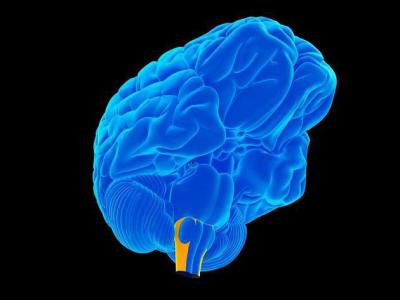
The glossopharyngeal nerve contains 4 nuclei and affects the following organs:
- pharynx muscles;
- palatine tonsils;
- taste receptors on the back of the tongue;
- salivary glands;
- tympanic cavities;
- auditory tubes.
The vagus nerve includes 4 nuclei of the medulla oblongata and is responsible for the work of:
- abdominal and chest organs;
- laryngeal muscles;
- cutaneous receptors of the auricle;
- internal glands of the abdominal cavity;
- neck organs.
The accessory nerve has 1 nucleus and controls the sternoclavicular and trapezius muscles. The hypoglossal nerve contains 1 nucleus and influences the muscles of the tongue.


